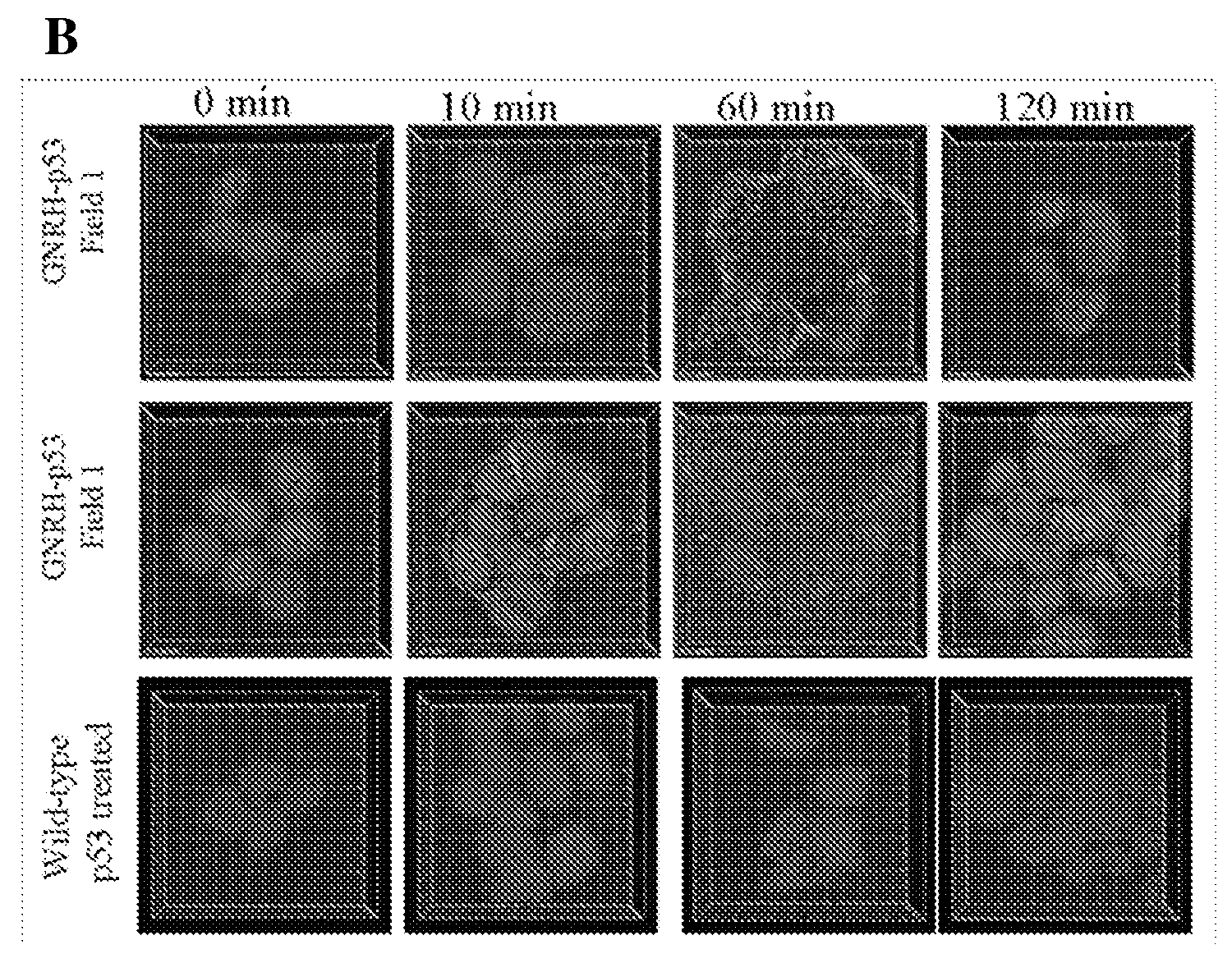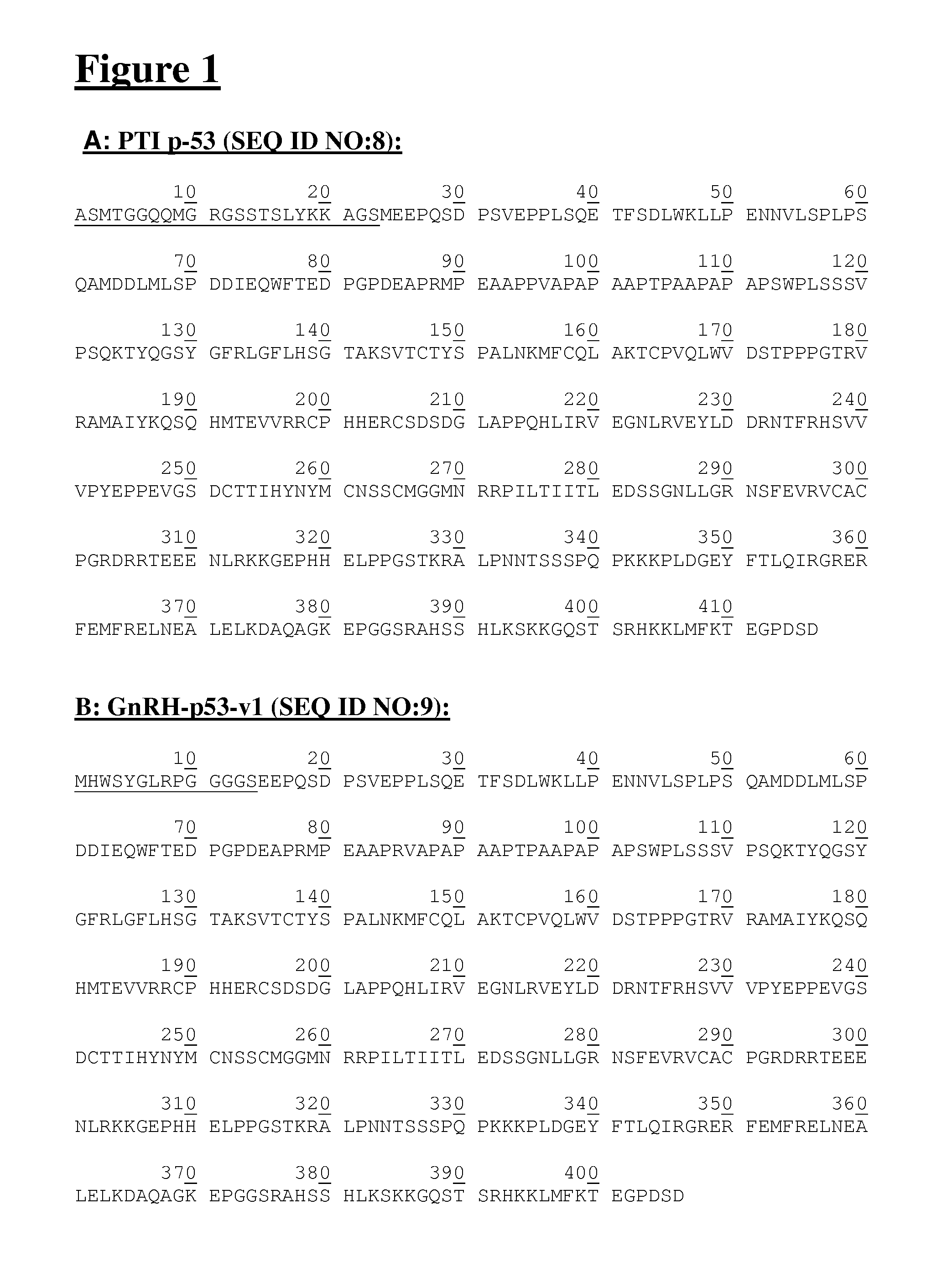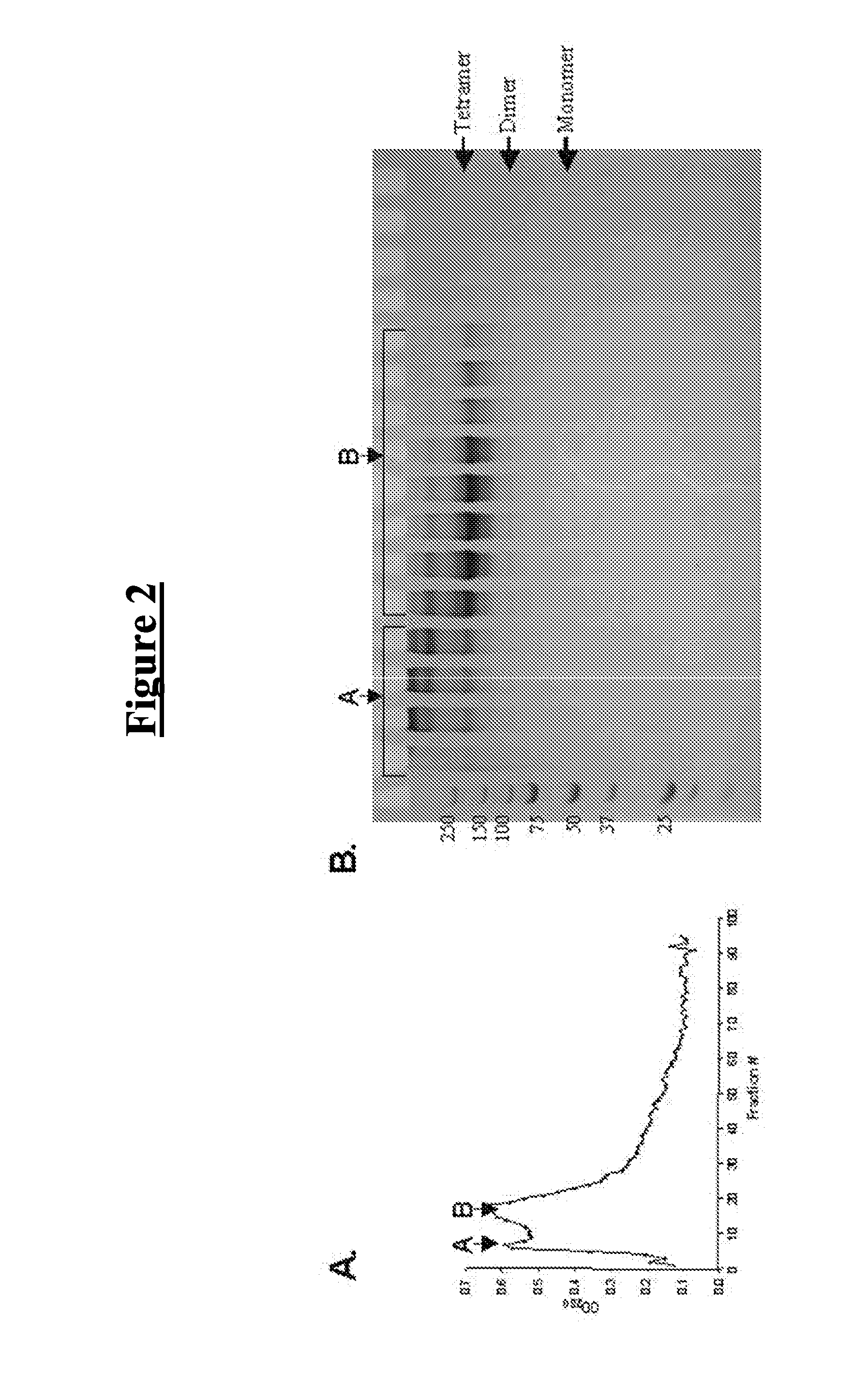P53 fusion proteins and methods of making and using thereof
a technology of p53 and fusion proteins, which is applied in the direction of p53 proteins, peptide/protein ingredients, peptide sources, etc., can solve the problems of no p53-based anti-neoplastic therapy available, the effect of reducing the ph of the diluted solubilized p53 protein
- Summary
- Abstract
- Description
- Claims
- Application Information
AI Technical Summary
Benefits of technology
Problems solved by technology
Method used
Image
Examples
example 1
Production of Tetrameric p53 Fusion Proteins in E. coli and Characterization of the p53 Fusion Proteins Generated
[0114]A p53-based protein therapeutic candidate may be wild-type to reduce immunogenicity, tetrameric to be efficient, and may be able to enter the targeted cancer cells. To date, attempts to produce wild-type, full-length, tetrameric p53 that is stable in the absence of chemical crosslinking have been unsuccessful. There are several reasons why isolation of p53 as a stable tetramer is important for a protein therapeutic application. First, the active form of p53 is a tetramer, p53 monomers bind DNA in a cooperative manner and the affinity for DNA is increased up to 100 fold by tetramerization (McLure, K G and Lee, P W 1998 EMBO J. 17:3342-3350). Second, the tetramerization domain is important for protein-protein interactions and tetramerization may regulate binding of some proteins to p53. The tetrameric structure may also allow for binding of multiple protein partners a...
PUM
| Property | Measurement | Unit |
|---|---|---|
| ionic strength | aaaaa | aaaaa |
| pH | aaaaa | aaaaa |
| temperature | aaaaa | aaaaa |
Abstract
Description
Claims
Application Information
 Login to View More
Login to View More - R&D
- Intellectual Property
- Life Sciences
- Materials
- Tech Scout
- Unparalleled Data Quality
- Higher Quality Content
- 60% Fewer Hallucinations
Browse by: Latest US Patents, China's latest patents, Technical Efficacy Thesaurus, Application Domain, Technology Topic, Popular Technical Reports.
© 2025 PatSnap. All rights reserved.Legal|Privacy policy|Modern Slavery Act Transparency Statement|Sitemap|About US| Contact US: help@patsnap.com



